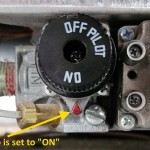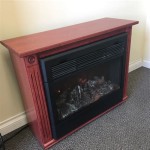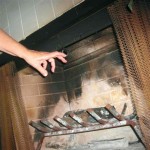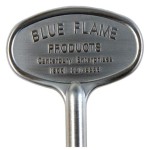Hot Ash Fireplace Vacuum: A Comprehensive Guide
The careful maintenance of a fireplace is essential for safety, efficiency, and longevity. One critical aspect of fireplace maintenance is the removal of ash. While traditional methods like shovels and brushes exist, they often create dust clouds and are less efficient at removing fine particles. The hot ash fireplace vacuum presents a modern solution specifically designed to handle the unique challenges of ash removal.
This article provides a comprehensive overview of hot ash fireplace vacuums, exploring their features, benefits, safety considerations, and proper usage. Understanding the capabilities and limitations of these vacuums is crucial for ensuring both effective cleaning and safe operation.
Understanding the Need for Specialized Ash Removal
Removing ash from a fireplace is not a simple task. Standard household vacuums are generally unsuitable for this purpose due to several factors. Firstly, standard vacuums are not designed to handle the high temperatures that hot ash can retain. Even seemingly cool ash can harbor embers that can melt or ignite the vacuum bag or filter, posing a significant fire hazard. Secondly, the fine particles of ash can easily clog the filters of standard vacuums, rendering them ineffective and potentially damaging the motor. Finally, the abrasive nature of ash can scratch and damage the interior components of a regular vacuum cleaner.
Hot ash fireplace vacuums address these issues by incorporating specific design features and materials that can withstand high temperatures and effectively filter fine ash particles. This specialized design ensures safer and more efficient ash removal compared to using conventional methods or standard vacuum cleaners.
The dangers associated with improper ash disposal are not limited to vacuum cleaner damage. Improperly disposed ash, even when presumed cold, can reignite and cause fires. Therefore, using a hot ash vacuum, alongside proper ash disposal practices, reduces the risk of accidental fires significantly.
Furthermore, consistent and thorough ash removal is crucial for maintaining the efficiency of the fireplace. Accumulated ash can obstruct airflow, reducing the fireplace's heating capacity and potentially leading to the buildup of creosote in the chimney. Creosote is a flammable substance that can contribute to dangerous chimney fires. A hot ash vacuum helps prevent these issues by facilitating the removal of ash before it accumulates excessively.
Features and Specifications of Hot Ash Fireplace Vacuums
Hot ash fireplace vacuums are distinguished by their unique design and construction. One of the most important features is the heat-resistant canister and hose. These components are typically made from metal, often steel or aluminum, which can withstand high temperatures without melting or degrading. The metal construction also helps dissipate heat, preventing the vacuum exterior from becoming dangerously hot to the touch.
The filtration system is another crucial aspect of a hot ash vacuum. These vacuums typically employ multi-stage filtration systems to capture the fine ash particles effectively. A common configuration includes a coarse filter to trap larger debris, followed by a fine particulate filter, often a HEPA (High-Efficiency Particulate Air) filter, to capture microscopic ash particles. This multi-stage filtration prevents ash from escaping back into the room and protects the vacuum motor from damage.
The motor of a hot ash fireplace vacuum is designed for heavy-duty use and often includes features to prevent overheating. Many models incorporate thermal protection systems that automatically shut off the motor if it becomes too hot, preventing damage and ensuring safe operation. The motor's power is also an important consideration, as it determines the vacuum's suction capacity and ability to effectively remove ash from crevices and tight spaces within the fireplace.
In addition to these core features, many hot ash fireplace vacuums come with a variety of attachments to enhance their versatility. These attachments may include crevice tools for cleaning hard-to-reach areas, brushes for loosening stubborn ash deposits, and extension wands for increasing the reach of the vacuum. Some models also feature a blower function, which can be used to clear debris from the fireplace or outdoor areas.
Manufacturers often specify the maximum temperature that the vacuum can safely handle. It is crucial to adhere to these specifications and only vacuum ash that has cooled sufficiently. Typically, the ash should be cool to the touch before vacuuming. Allowing the ash to cool completely minimizes the risk of fire hazards and protects the vacuum's components from heat damage.
Safe Operation and Maintenance of Hot Ash Vacuums
Operating a hot ash fireplace vacuum safely requires adherence to specific guidelines and precautions. Before using the vacuum, it is essential to ensure that the ash has cooled completely. Testing the ash with a gloved hand is a simple way to assess its temperature. If the ash feels warm, it should be allowed to cool further before attempting to vacuum it.
It is also crucial to inspect the vacuum's components, including the hose, canister, and filters, for any signs of damage before each use. Damaged components can compromise the vacuum's safety and effectiveness. If any damage is detected, the vacuum should not be used until the damaged parts have been replaced.
During operation, the vacuum should be used in a well-ventilated area to prevent the buildup of dust. Wearing a dust mask is also recommended to minimize the inhalation of fine ash particles. The vacuum should be operated according to the manufacturer's instructions, and it should not be overloaded or used for purposes other than ash removal.
Maintenance is essential for ensuring the longevity and performance of a hot ash fireplace vacuum. Regular cleaning of the filters is crucial for maintaining optimal suction and preventing the motor from overheating. The filters should be cleaned according to the manufacturer's instructions, which may involve washing them with water or using compressed air. The canister should also be emptied regularly to prevent it from becoming too full, which can reduce suction and increase the risk of filter clogging.
Proper storage of the vacuum is also important. The vacuum should be stored in a dry, cool place away from flammable materials. The hose and attachments should be stored neatly to prevent damage and ensure easy access. Following these maintenance practices will help extend the life of the vacuum and ensure its continued safe and effective operation.
Additionally, users should be aware of the potential for static electricity buildup, especially in dry conditions. Grounding the vacuum, if possible, can help mitigate this risk. Furthermore, emptying the canister outdoors is recommended to prevent the dispersal of ash dust within the home.
Regularly inspecting the power cord for damage and avoiding the use of extension cords are also important safety considerations.
Finally, it’s crucial to remember that no hot ash vacuum is completely fireproof. Although designed to handle heat, the vacuum is not intended for actively burning embers or extremely hot contents. Common sense precautions and careful monitoring are essential for safe operation.

Ash Vacuum Vault Pro For Fireplaces Amp Stoves Earth Sense

Us Stove 6 5 Gal 2 Hp Ash Vacuum Av15e The Home Depot

5 Gal 3 0 Peak Hp Ash Vac Ridgid Tools

Powersmith 10 Amp 3 Gal All In One Wheeled Ash Vacuum With Metal Lined Hose Washable Filter And 5 Accessory Nozzles Pavc101 The Home Depot

Vac Ash Vacuum Stainless Steel Bucket At Com

Us Stove 6 5 Gal 2 Hp Ash Vacuum Av15e The Home Depot

Turbule Fireplace Stove And Grill Ash Vacuum Cleaner

Bentism 4 Gallon 1200w Ash Vacuum Cleaner For Fireplaces Pellet Stoves Grills Bbq Com

6 Best Hot Ash Vacuum Reviews Buyers Guide

Hot Ash Vacuum For Corn Wood Pellet Stove Furnace
Related Posts








